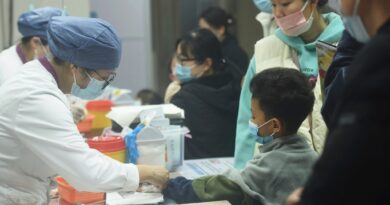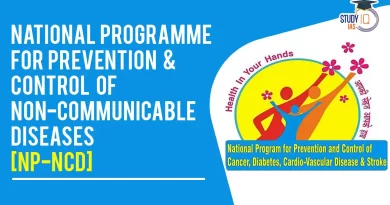A Complete Guide to Affordable and Quality Healthcare Abroad
Medical tourism is rapidly gaining popularity as individuals seek affordable, high-quality healthcare solutions outside their home countries. Whether it’s for elective procedures, advanced treatments, or dental care, this global phenomenon combines medical care with travel. In this article, we’ll explore the key aspects of medical tourism, its benefits, risks, and top destinations.
What Is Medical Tourism?
Medical tourism refers to the practice of traveling to another country to receive medical care. People often choose this route due to the lower costs, shorter waiting times, or access to specialized treatments unavailable in their home country.
This practice isn’t new, but it has seen a significant rise in recent years, driven by globalization, technological advancements in healthcare, and an increasing awareness of international healthcare options.

Benefits of Medical Tourism
1. Cost Savings
One of the biggest drivers of medical tourism is affordability. Treatments like dental implants, cosmetic surgeries, and orthopedic procedures can cost 50-70% less in countries like Mexico, India, or Thailand compared to the U.S. or Europe.
2. High-Quality Healthcare
Many medical tourism destinations boast world-class facilities, state-of-the-art technology, and highly skilled professionals. Countries like Singapore and South Korea are renowned for their medical expertise.
3. Access to Advanced Procedures
Some treatments, such as stem cell therapy or advanced cancer care, may be restricted or unavailable in a patient’s home country. Medical tourism offers access to these cutting-edge procedures.
4. Shorter Waiting Times
In countries with public healthcare systems, waiting times for surgeries can be months or even years. Medical tourism allows patients to bypass these delays and receive timely treatment.
5. Combining Healthcare with Travel
Medical tourism often includes the opportunity to explore new destinations. Patients can recover in beautiful surroundings, turning their treatment journey into a memorable experience.


Risks of Medical Tourism
While medical tourism offers numerous advantages, it’s not without risks.
1. Quality Variability:
Not all medical facilities meet international standards. Patients must thoroughly research hospitals and clinics before committing.
2. Language Barriers
Communication challenges can arise when dealing with healthcare providers in a foreign country.
3. Legal and Ethical Concerns
Different countries have varying regulations and ethical standards. Understanding these differences is crucial before pursuing medical procedures abroad.
4. Complications and Aftercare
Receiving treatment far from home can complicate follow-up care. Patients may need to arrange for long-distance consultations or additional local treatments if complications arise
Top Medical Tourism Destinations
1. Thailand
Known for its affordable cosmetic surgeries and dental care, Thailand is a leader in medical tourism. Hospitals like Bumrungrad International Hospital offer top-notch facilities.
2. India
India is a hub for advanced procedures such as heart surgery, organ transplants, and cancer care. Its medical infrastructure and affordable costs attract thousands of patients annually.
3. Mexico
For North Americans, Mexico is a popular destination for dental treatments, bariatric surgery, and cosmetic procedures. Its proximity makes it convenient for short medical trips.
4. Turkey
Turkey is known for its expertise in hair transplants and eye surgeries. The country also offers competitive prices and luxury recovery packages.
5. South Korea
South Korea is a global leader in plastic surgery and skincare treatments. It’s also known for its cutting-edge technology in general medicine.
How to Plan for Medical Tourism
If you’re considering medical tourism, thorough planning is essential to ensure a safe and successful experience. Here are the key steps:
1. Research Healthcare Providers
Use online reviews, accreditations, and testimonials to evaluate potential hospitals or clinics. Look for international certifications like JCI (Joint Commission International).
2. Understand the Costs
Request a detailed breakdown of costs, including consultation fees, hospital stays, medications, and post-operative care. Factor in travel and accommodation expenses.
3. Consult Your Doctor
Discuss your plans with your local healthcare provider. They can provide insights, recommend treatments, and assist with follow-up care after your return.
4. Check Travel Requirements
Some procedures may require you to stay in the destination country for an extended period. Ensure you have the necessary visas and travel documents.
5. Arrange for Aftercare
Plan for follow-up visits and recovery time. Some patients may need to return for additional procedures or monitoring.


Why Medical Tourism Is on the Rise
The global medical tourism market is expected to grow exponentially in the coming years. Factors driving this trend include:
1. Rising Healthcare Costs in Developed Countries
High medical expenses in countries like the U.S. push patients to seek affordable alternatives abroad.
2. Aging Populations
As populations age, the demand for specialized treatments like orthopedic surgery and cardiac care increases.
3. Improved Connectivity
Cheaper flights and easier access to information make it simpler for patients to plan medical trips.
4. Digital Technology
Telemedicine and virtual consultations allow patients to connect with international doctors before committing to travel.
Tips for a Safe Medical Tourism Experience
1. Choose Accredited Facilities
Stick to hospitals and clinics with international accreditations.
2. Verify Doctor Credentials
Check the qualifications and experience of the medical professionals involved in your care.
3. Get Travel Insurance
Medical travel insurance can cover unexpected expenses like complications or cancellations.
4. Understand the Procedure
Be fully informed about the risks, benefits, and recovery requirements of your treatment.
5. Plan for Emergencies
Have a contingency plan in place, including contact information for your local embassy.

Conclusion
Medical tourism is transforming healthcare, offering patients an affordable and efficient way to access medical treatments while exploring new destinations. By carefully planning your journey and choosing reputable providers, you can enjoy the benefits of medical tourism with minimal risks.
Whether you’re seeking cosmetic surgery, dental care, or advanced treatments, the world is now open for healing. Take the time to research and make informed decisions, and you’ll discover the remarkable potential of medical tourism.




